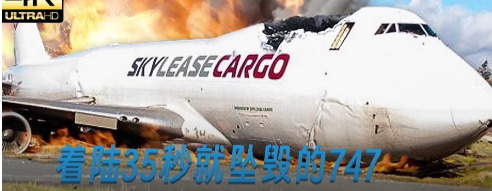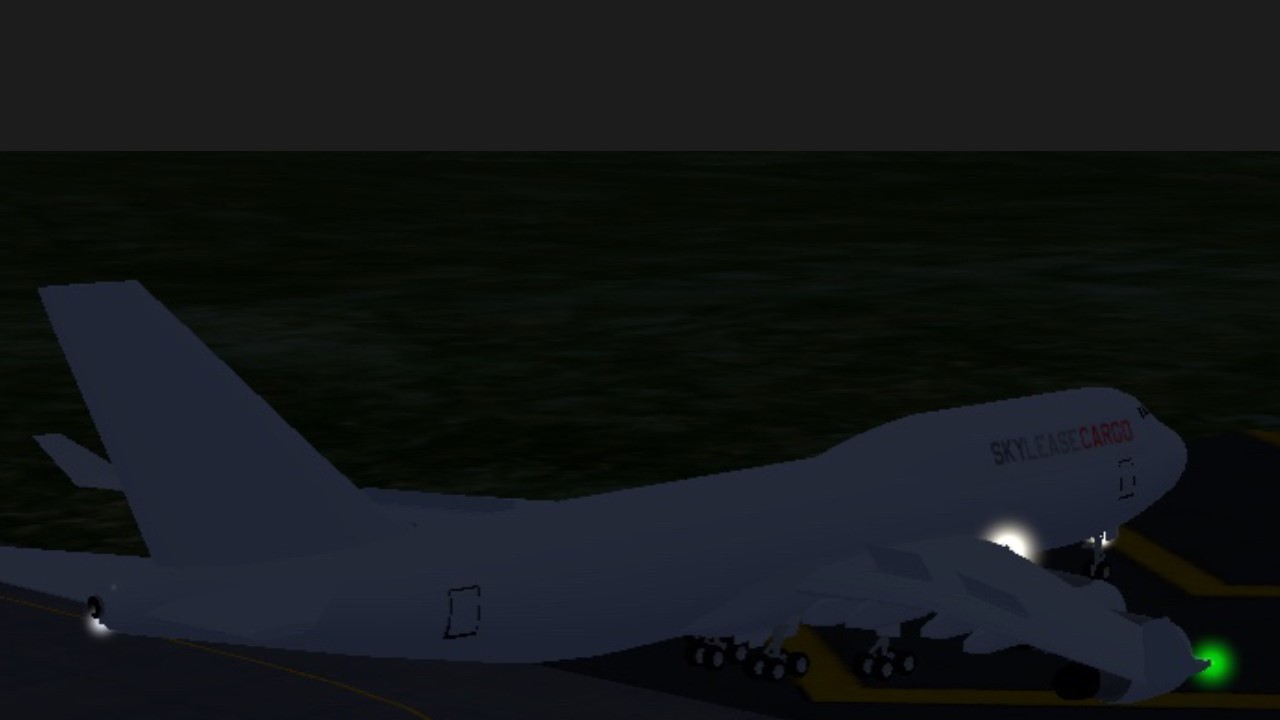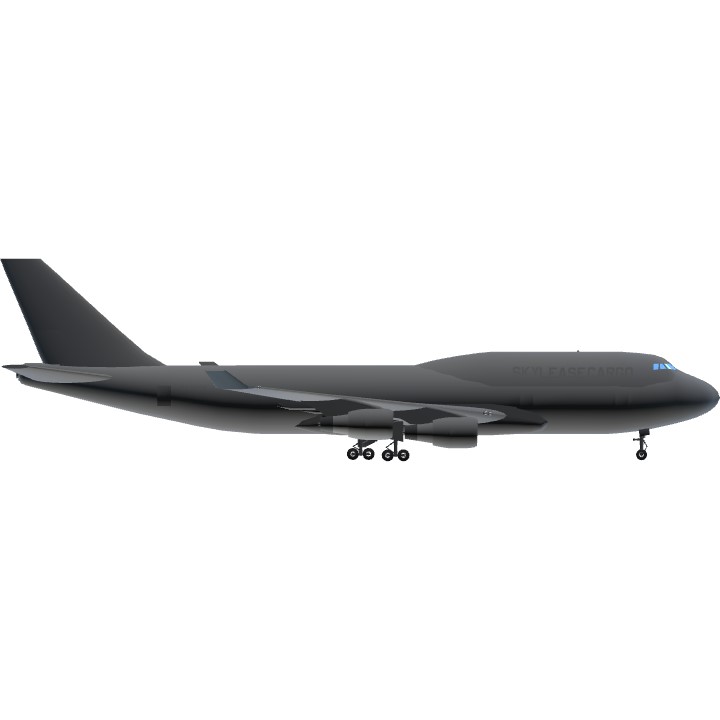
(Sky Lease Cargo flight 4854 ran out of the runway,TFC Cover)
Sky Lease flight 4854, a Boeing 747-400F, suffered a runway excursion after landing at Halifax International Airport, Canada.
The aircraft departed Chicago-O'Hare International Airport, USA at 07:02 UTC (01:02 local time) and arrived near Halifax about 09:00 UTC (05:00 local time). The controller cleared the flight for an ILS approach to runway 14.
During the approach, the tower controller reported wind from 260° at 16 knots, gusting to 21 and asked the flight if runway 14 was still acceptable. Runway 14 is a 2347m long asphalt runway and the 16 knot wind from 26° would translate to an 8 knot tailwind component.
When the aircraft was 1 minute and 21 seconds from the threshold, the crew realized the tailwind component; however, they did not recalculate the performance data to confirm that the landing distance available was still acceptable, likely because of the limited amount of time available before landing. The unexpected tailwind resulted in a greater landing distance required , but this distance did not exceed the length of the runway.
After receiving a confirmation from the flight, the controller issued a clearance to land on runway 14.
The aircraft touched down firmly at approximately 05:06, during the hours of darkness. After the firm touchdown, for undetermined reasons, the engine No. 1 thrust lever was moved forward of the idle position, causing the speed brakes to retract and the autobrake system to disengage, increasing the distance required to bring the aircraft to a stop. In addition, the right crab angle (4.5°) on initial touchdown, combined with the crosswind component and asymmetric reverser selection, caused the aircraft to deviate to the right of the runway centreline.
During the landing roll, the pilot monitoring?s attention was focused on the lateral drift and, as a result, the required callouts regarding the position of the deceleration devices were not made.
Although manual brake application began 8 seconds after touchdown, maximum braking effort did not occur until 15 seconds later, when the aircraft was 800 feet from the end of the runway. At this position, it was not possible for the aircraft to stop on the runway and, 5 seconds later, the aircraft departed the end of the runway at a speed of 77 knots and came to a stop 270 m (885 feet) past the end.
The aircraft struck the approach light stanchions and the localizer antenna array. The No. 2 engine detached from its pylon during the impact sequence and came to rest under the left horizontal stabilizer, causing a fire in the tail section following the impact. The emergency locator transmitter activated. Aircraft rescue and firefighting personnel responded. All 3 crew members received minor injuries and were taken to the hospital. The passenger was not injured.
During the overrun, the aircraft crossed a significant drop of 2.8 m (9 feet) approximately 166 m (544 feet) past the end of the runway and was damaged beyond repair.
Probable Cause:
Findings as to causes and contributing factors
1. The ineffective presentation style and sequence of the NOTAMs available to the crew and flight dispatch led them to interpret that Runway 23 was not available for landing at Halifax/Stanfield International Airport.
2. The crew was unaware that the aircraft did not meet the pre-departure landing weight requirements using flaps 25 for Runway 14.
3. Due to the timing of the flight during the nighttime circadian trough and because the crew had had insufficient restorative sleep in the previous 24 hours, the crew was experiencing sleep-related fatigue that degraded their performance and cognitive functioning during the approach and landing.
4. Using unfactored (actual) landing distance charts may have given the crew the impression that landing on Runway 14 would have had a considerable runway safety margin, influencing their decision to continue the landing in the presence of a tailwind.
5. When planning the approach, the crew calculated a faster approach speed of reference speed + 10 knots instead of the recommended reference speed + 5 knots, because they misinterpreted that a wind additive was required for the existing conditions.
6. New information regarding a change of active runway was not communicated by air traffic control directly to the crew, although it was contained within the automatic terminal information service broadcast; as a result, the crew continued to believe that the approach and landing to Runway 14 was the only option available.
7. For the approach, the crew selected the typical flap setting of flaps 25 rather than flaps 30, because they believed they had a sufficient safety margin. This setting increased the landing distance required by 494 feet.
8. The crew were operating in a cognitive context of fatigue and biases that encouraged anchoring to and confirming information that aligned with continuing the initial plan, increasing the likelihood that they would continue the approach.
9. The crew recognized the presence of a tailwind on approach 1 minute and 21 seconds from the threshold; likely due to this limited amount of time, the crew did not recalculate the performance data to confirm that the runway safety margin was still acceptable.
10. An elevated level of stress and workload on short final approach likely exacerbated the performance-impairing effects of fatigue to limit the crew?s ability to determine the effect of the tailwind, influencing their decision to continue the approach.
11. The higher aircraft approach speed, the presence of a tailwind component, and the slight deviation above the glideslope increased the landing distance required to a distance greater than the runway length available.
12. After the firm touchdown, for undetermined reasons, the engine No. 1 thrust lever was moved forward of the idle position, causing the speed brakes to retract and the autobrake system to disengage, increasing the distance required to bring the aircraft to a stop.
13. The right crab angle (4.5°) on initial touchdown, combined with the crosswind component and asymmetric reverser selection, caused the aircraft to deviate to the right of the runway centreline.
14. During the landing roll, the pilot monitoring?s attention was focused on the lateral drift and, as a result, the required callouts regarding the position of the deceleration devices were not made.
15. The pilot flying focused on controlling the lateral deviation and, without the benefit of the landing rollout callouts, did not recognize that all of the deceleration devices were not fully deployed and that the autobrake was disengaged.
16. Although manual brake application began 8 seconds after touchdown, maximum braking effort did not occur until 15 seconds later, when the aircraft was 800 feet from the end of the runway. At this position, it was not possible for the aircraft to stop on the runway and, 5 seconds later, the aircraft departed the end of the runway at a speed of 77 knots and came to a stop 270 m (885 feet) past the end of the runway.
17. During the overrun, the aircraft crossed a significant drop of 2.8 m (9 feet) approximately 166 m (544 feet) past the end of the runway and was damaged beyond repair. While this uneven terrain was beyond the 150 m (492 feet) runway end safety area proposed by Transport Canada, it was within the recommended International Civil Aviation Organization runway end safety area of 300 m (984 feet).
Specifications
General Characteristics
- Predecessor B747-400[GE]
- Created On iOS
- Wingspan 211.3ft (64.4m)
- Length 232.0ft (70.7m)
- Height 65.3ft (19.9m)
- Empty Weight N/A
- Loaded Weight 126,368lbs (57,319kg)
Performance
- Power/Weight Ratio 0.624
- Horse Power/Weight Ratio 0.047
- Wing Loading 17.6lbs/ft2 (85.7kg/m2)
- Wing Area 7,197.3ft2 (668.7m2)
- Drag Points 21794
Parts
- Number of Parts 615
- Control Surfaces 9
- Performance Cost 3,233





